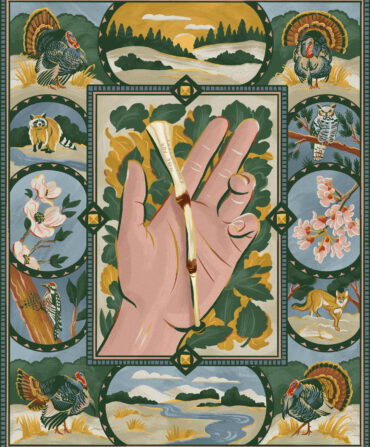COLLEGE FOOTBALL
Ranking the Orange Colors of the SEC and ACC
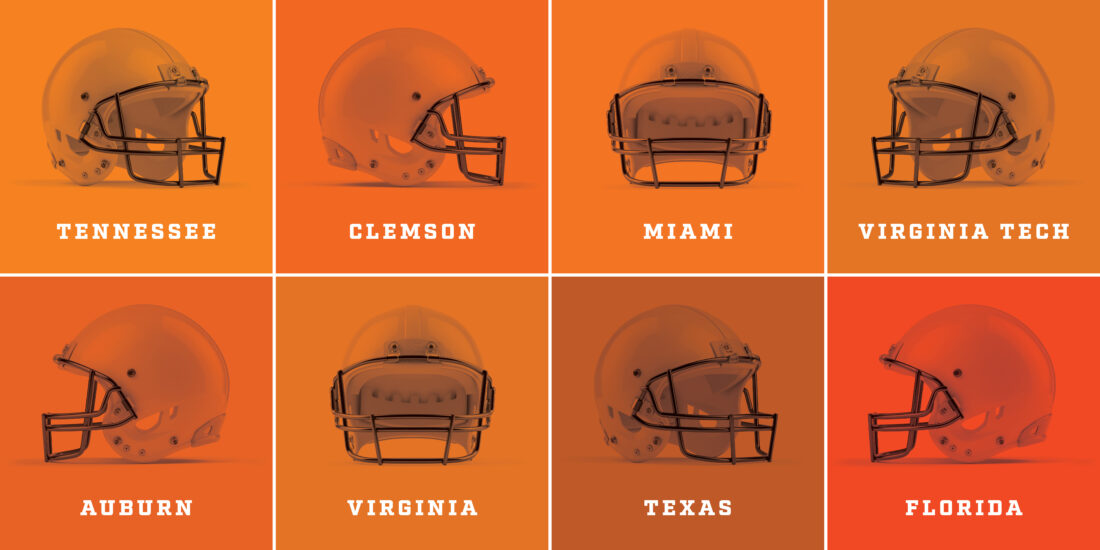
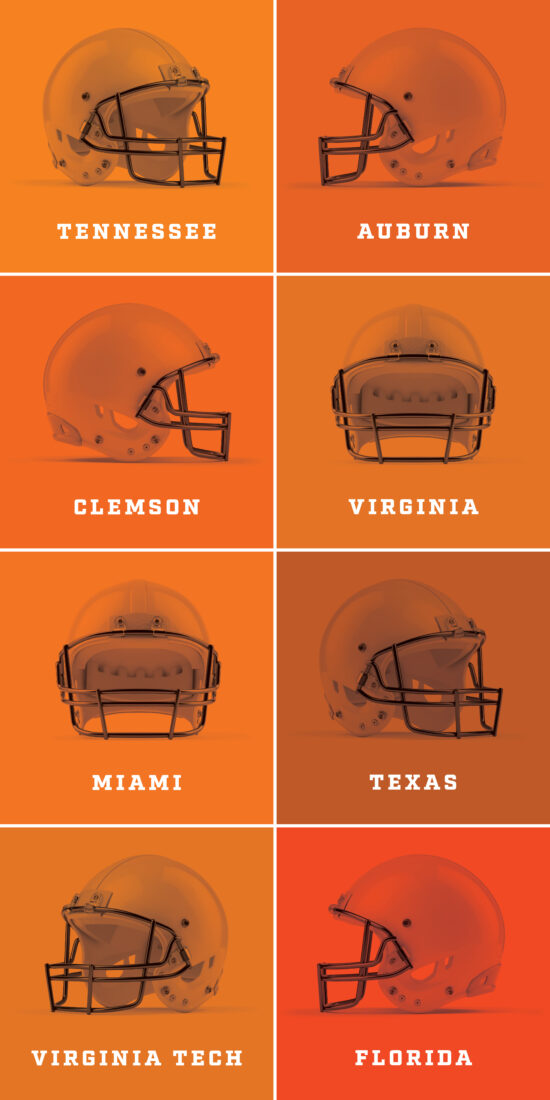
Illustration: Julia Knetzer; Maksym Yemelyanov/Adobe (helmets)
Let me be clear: Orange is an abomination. There, now you understand and hopefully appreciate that I am coming to this ranking of SEC and ACC oranges from a completely neutral playing field. I am an equal opportunity hater. My sideline cooler runneth over with Haterade, rhymes with Gatorade, which, of course, scientists at the University of Florida developed originally in lemon-lime and…orange.
As the Harvard-educated Elle Woods once proclaimed, “Whoever said orange was the new pink was seriously disturbed.” But my disgust with the color is, you could say, inherent, and linked to my distaste for Clemson—my parents, brother, and I all graduated from the University of South Carolina (team colors: an elegant garnet and black) and have, for better and often for worse, attended Gamecock football games with season tickets since 1988, pre-SEC. Then we joined the conference, and along with getting creamed most years by the Tigers, we usually also suffered defeats from Florida and Tennessee every November in a stretch that came to be called “the orange crush.”
With Texas joining the SEC fray this year, now eight Southern schools count this odious hue among its two primary team colors. So let’s welcome the Longhorns by ranking this now even-more-hellish landscape from meh to bleh.
1. Auburn University
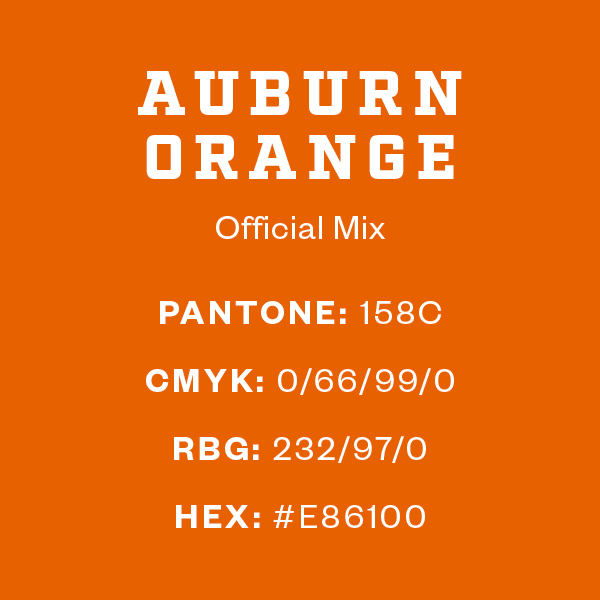
Confession: Much like Auburn, my high school’s colors were navy blue and something akin to this slightly darker orange, which evokes the loveliest of autumn’s maples and black gum trees. See! As Steel Magnolias’s Ouiser might say, I can be pleasant! Dammit!
Interestingly enough, as a prevalent theory goes, Auburn’s first football coach, George Petrie, picked these team colors in 1892 in homage to his own alma mater, the University of Virginia. Which leads me to…
2. University of Virginia
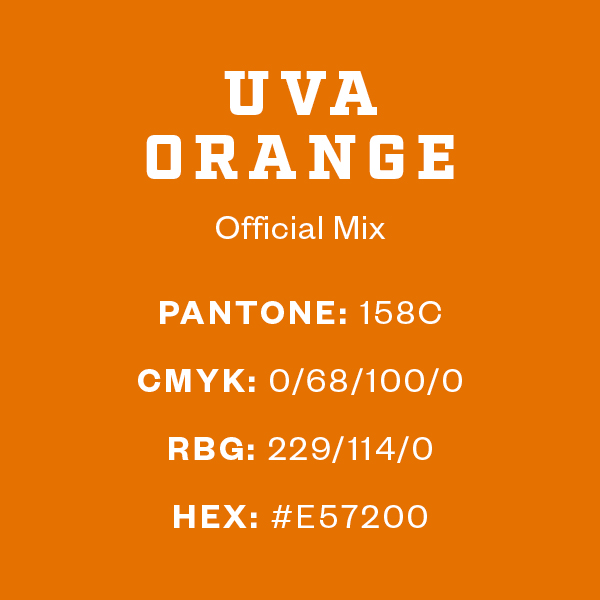
As you can tell from the official mix, this shade is, unsurprisingly, very close to Auburn’s, but the Alabama team gets the edge when we go to the second tiebreaker: best use of orange in the mascot (first tiebreaker is how it complements the team’s other primary color). And not only is Aubie the Tiger perhaps the cutest tiger mascot nationwide, he is MUCH less frightening than UVA’s knockoff D’Artagnan.
The Cavaliers do have a charming backstory to their combo, though: Students found the original colors, silver gray and cardinal red, too hard to see on a muddy playing field. At a campus meeting in 1888 to discuss changing them, Allen Potts, a star on UVA’s first football team, wore a blue-and-orange scarf he had picked up at England’s University of Oxford. A fellow student grabbed the scarf, waved it, and yelled, “How will this do?”
3. Virginia Tech
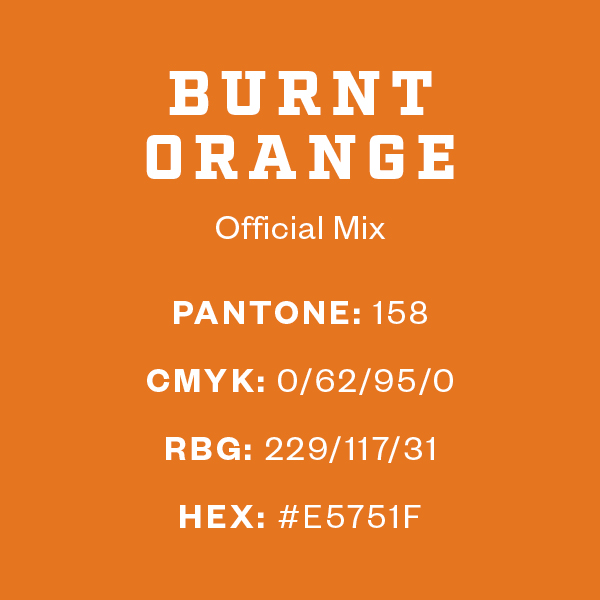
Clearly, the late 1800s were heady times for the nation’s nascent college football fans. That’s also when a committee formed at Virginia Tech to change its original colors of black and gray because the team’s athletic wear too closely resembled…prison uniforms. The committee picked “Chicago maroon” and this burnt orange because “no other college was using that particular color combination.” So creative! Still, the Hokies’ hue ranks third on my list because I can imagine driving through Blacksburg’s neighboring Brush Mountain Wilderness in October and witnessing these fitting pigments in the changing scarlet oaks and sugar maples.
4. University of Texas
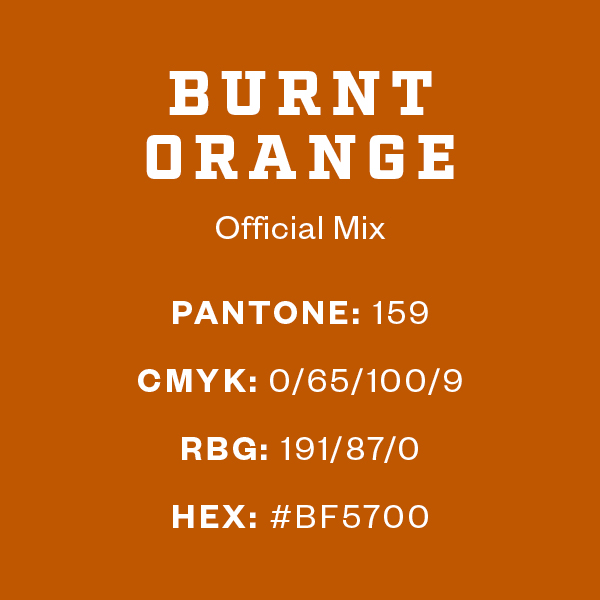
Sigh. Now we’re getting down to brass tacks. Or in this case, rusty tacks. Bless them, this burnt orange is almost too dusty-looking. Like a shag carpet that hasn’t been vacuumed since the Nixon administration. That being said, UT smartly pairs it with a crisp white to balance out the seventies-era ochre.
The official story, of course, goes back further than Watergate, to 1885, when, according to UT, “two students on their way to a baseball game stopped at a general store to get ribbons for the crowd.” The storekeeper had a lot of orange on hand because—go figure!—no one wanted it otherwise. The university adopted the colors officially five years later, and the orange ombré’d to the current tint by the 1960s, when then-coach Darrell Royal preferred this version because it most closely resembled the color of a football. Actually, that’s kind of brilliant, tempted to move the Horns up a spot.
5. University of Miami
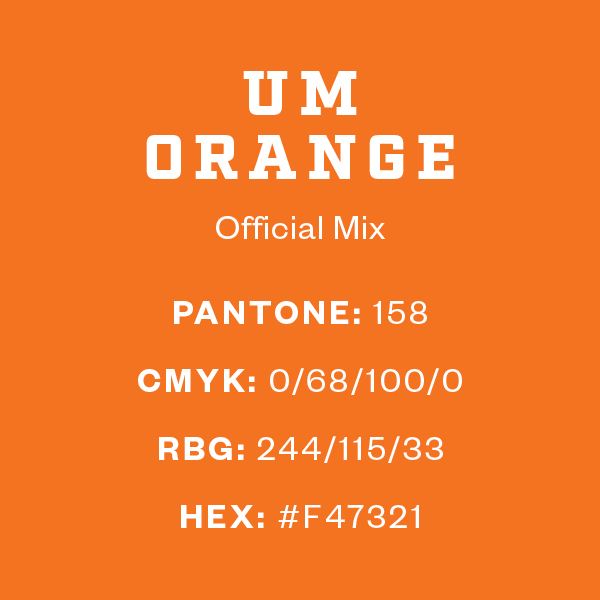
Orange at its purest. And generally inoffensive! Until, that is, you put it up against Miami’s Christmas-y green. You know when something disturbs you to your core but you can’t put your finger on why? Congrats, Hurricanes! You’ve descended into that chromatic uncanny valley.
No surprise, the university picked these colors in 1926 to represent the state’s orange trees. Which is sweet. But Miami is not farther down on this list thanks to its kick-ass nickname and mascot, Sebastian the Ibis, chosen because folklore says the bird “is the last sign of wildlife to take shelter before a hurricane and the first to reappear after the storm.”
6. University of Florida
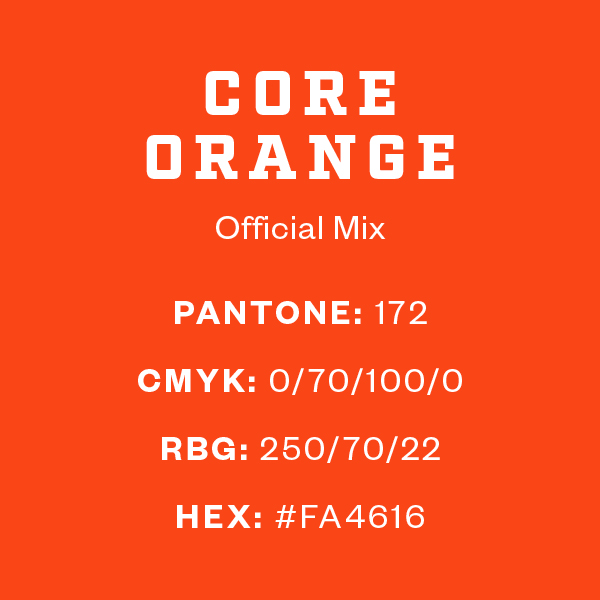
This hurts my eyes. It hurt my eyes in 2006, when the Gamecocks lost to the Gators 17–16. In 2007, when Tim Tebow hung seven touchdowns on us. In 2008, when Florida handed its former coach, then our HBC, Steve Spurrier, the worst defeat of his career. And hell, it hurt last year, when they beat us 41–39 in the last minute of our homecoming game.
And the reason behind the color scheme hurts my sense of storytelling. As the most probable theory goes, blue and orange came from the colors of the two primary schools that merged to become UF at the turn of the twentieth century: East Florida Seminary and Florida Agricultural College. BORING!
7. Clemson University
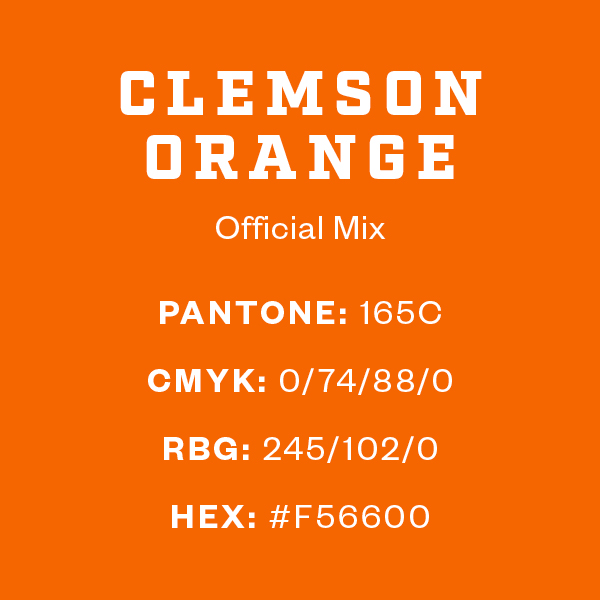
Ha! Fooled you, didn’t I? You were sure Clemson would be last. Well, while the Tigers are last in my heart, as you’ll recall, this is a completely unbiased biased report. And as your impartial observer, it’s my duty to tell you about the time my parents ventured to an away game in Athens in 2001, when the Gamecocks miraculously pulled out a win. (Mom: “Even the little old ladies in the parking lot we had to walk through were drunk and yelling at us!”) During the game, their seatmate muttered four words over and over: Cheatin’ cheatin’ Georgia Clemson. Cheatin’ cheatin’ Georgia Clemson.
Well, how’s this for cheatin’? Not only did “Clemson Agricultural College” pick the garnet of its in-state rival as its initial color, when the first football coach, Walter Riggs, changed the combo in 1899, he swiped the orange and blue of his alma mater (now known as Auburn) and altered them to purple and orange.
Wait, you ask, isn’t that what Auburn did to UVA? And UVA did to Oxford? You’re right. This is a Russian nesting doll of cheatin’ and stealin’! Put them all in prison: Orange is the new bleh.
Side note: You may have noticed one ACC team missing from this list. Sorry, Syracuse. Though you’re known as “the Orange” and your mascot is super cute, you are not Southern, and you’re a hearty 250 miles from the Atlantic coast. But gosh darn it, you get an honorable mention for ruining Clemson’s bid for a perfect season in 2017.
8. University of Tennessee
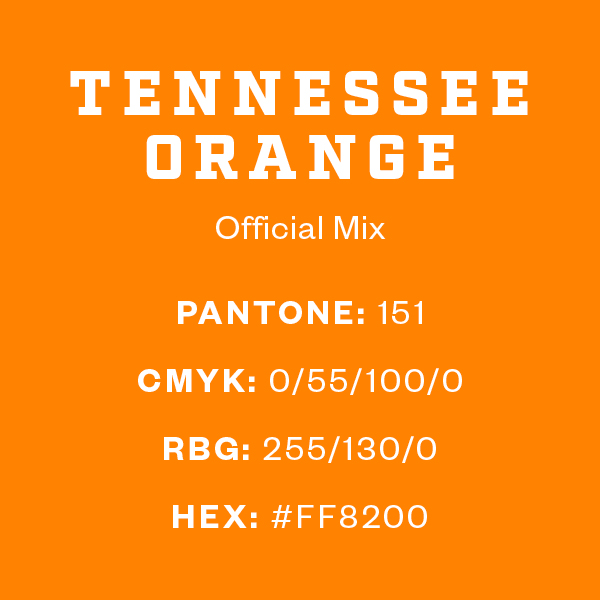
People rightly have issues with the book and movie The Blind Side, but one quote from the film remains as solid and true as it was back in 2009, when Sandra Bullock, as stalwart Ole Miss fan Leigh Anne Tuohy, uttered it about Tennessee: “I will not wear that gaudy orange. I will not. It is not in my color wheel, and I’m not gonna wear it.”
What Bullock called “that gaudy orange,” I have long called “faded neon pumpkin.” Who in the name of Dolly thought that looked good? Well, the answer is Charles Moore, UT’s athletic association president in 1889, who proposed the yellowy orange for the school’s first field day that year, supposedly inspired by the centers of the American daisies that grew across campus. Not all students loved it—legend holds that one even called Moore “color-blind.” I didn’t say it! She did! But it would explain a lot.
About the colors: To show each school’s colors here, we used hexadecimal color codes (hex for short), which are widely used in digital design. This article explains the differences between the various color codes.



